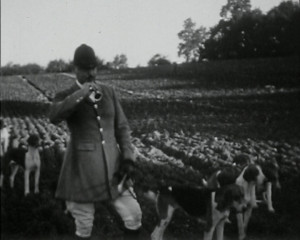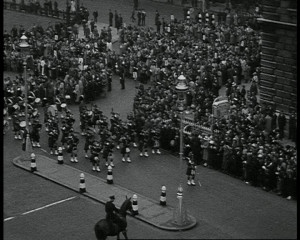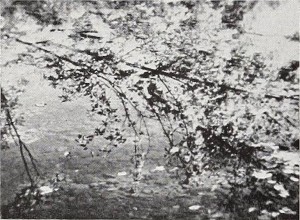"Film is a comedy about how a married couple originally met" Archives of Ontario.

"At the Old Berkeley for the Point to Point race for hunting horses, crowds have gathered, some people stand whilst others sit on carts to watch the event. The entertainment includes marching Scottish bagpipers. There is a line of tote stands for betting. The riders mount up and line up at the starting point. The race begins, the horses and jockeys complete the course. Many of the jockeys are seen following the race, and the horses are wiped down. The second film is of another Berkeley Hunt, a fox is in the bushes, panting heavily. The fox hounds are exercised and returned to their kennel. Fox hound puppies, the next generation, come out of their kennel to feed. At Solesbridge the riders and hounds gather for the hunt. The hunt progresses across the land until the bugle is blown, the fox has gone to ground and the men dig up the earth in search of the fox. The fox hounds suddenly surround the hole, the fox has been caught. A rider taunts the hounds with the foxes head. Several other hunts are featured, the riders and hounds crossing the countryside attempting to track down the foxes. Crowds, riders and hounds gather outside Latimer House, awaiting the start of a November hunt and there are similar scenes at Bovington. At Scatterdell youngsters are blooded as is the tradition for novice riders. A race is about to begin at Amersham Broadway, as the riders and hounds make there way through the streets and into the nearby countryside. At Great Hampden crowds and riders and hounds gather, similarly at Hartwell House, crowds, hounds and riders meet before setting off. The film ends with the cutting up of a fox, the body is tossed up in the air for the hounds leaving a young boy left holding the fox's tail" (EAFA Database).
"At the Sandpits is perhaps Crawley's first completed work, produced when he was a teenager; Crawley went on to make many award-winning amateur films before turning professional in the 1940s as a producer of industrial films. Employing rapid cutting, trick photography, and imaginative scenarios, At the Sandpits conveys a strong sense of dynamic action in a short film about a family picnic. The film begins by showing the preparation of sandwiches for a picnic; after showing the meal in a few deft shots, the adults are seen relaxing, while the kids and pets, shot from extreme low angle in slow motion, run toward the sandpits. The film continues with short but carefully constructed sequences of the kids pretending to be buried alive in the sand, having a baseball game, and then returning home, tired. Finally, the film concludes with a strange dream sequence, employing trick photography, in which three girls appear decapitated behind a sheet" Tepperman, 173.
"A compilation film documenting the many Augustas--streets, storefronts and cities from Montana to Maine--that Scott Nixon encountered as a traveling salesman based in Augusta, GA." Moving Image Research Collection, University of South Carolina

"Short film recording a wreath laying ceremony at the Cenotaph from a high vantage point in Parliament Street" (EAFA Database).
"Autumn, filmed by Bernard Van H. Schultz, successfully demonstrates that Kodacolor can be used for long shots of landscapes and similar subjects. This record of a New England autumn, with its accompanying riot of color, leaves very little to be desired as a representation of the spirit of the season. Of particular note was the evident care used in choosing appropriate viewpoints, not only with relation to the framing principle but also from the point of view of both color and motion. The continuity was rather static which was appropriate to the subject. The film was bound together remarkably well by the choice of successive scenes which followed a time sequence, starting with shots taken in the bright light of midday and ending with sunset shots. However, Mr. Schultz's principal achievement lay in the selection of the proper neutral density filters, yielding uniformly excellent color results which are all the more remarkable because of the preponderance of long shots." Movie Makers, Dec. 1930, 759.

"Autumn, by Robert P. Kehoe, now takes the lead in an ever lengthening series of exquisite natural miniatures, recorded by this engineer with art at his finger tips. Having reported earlier on the bluster of a late, unfriendly fall, Mr. Kehoe turns in this film to the warm beauty and haunting sadness of autumn's Indian summer. Life is drifting toward death, to be sure, yet it moves in peace down the placid stream, with loveliness through the golden air. But one cannot describe the incredible imagery of a Kehoe study. As well put under the intellectual microscope a Wordsworth sonnet or a Keatsian ode. Autumn, as brief as it is poignant, is his best work to date. As long as color film can still be had, we see no reason why the good Lord's handiwork should go unsung." Movie Makers, Dec. 1942, 489.
Total Pages: 203